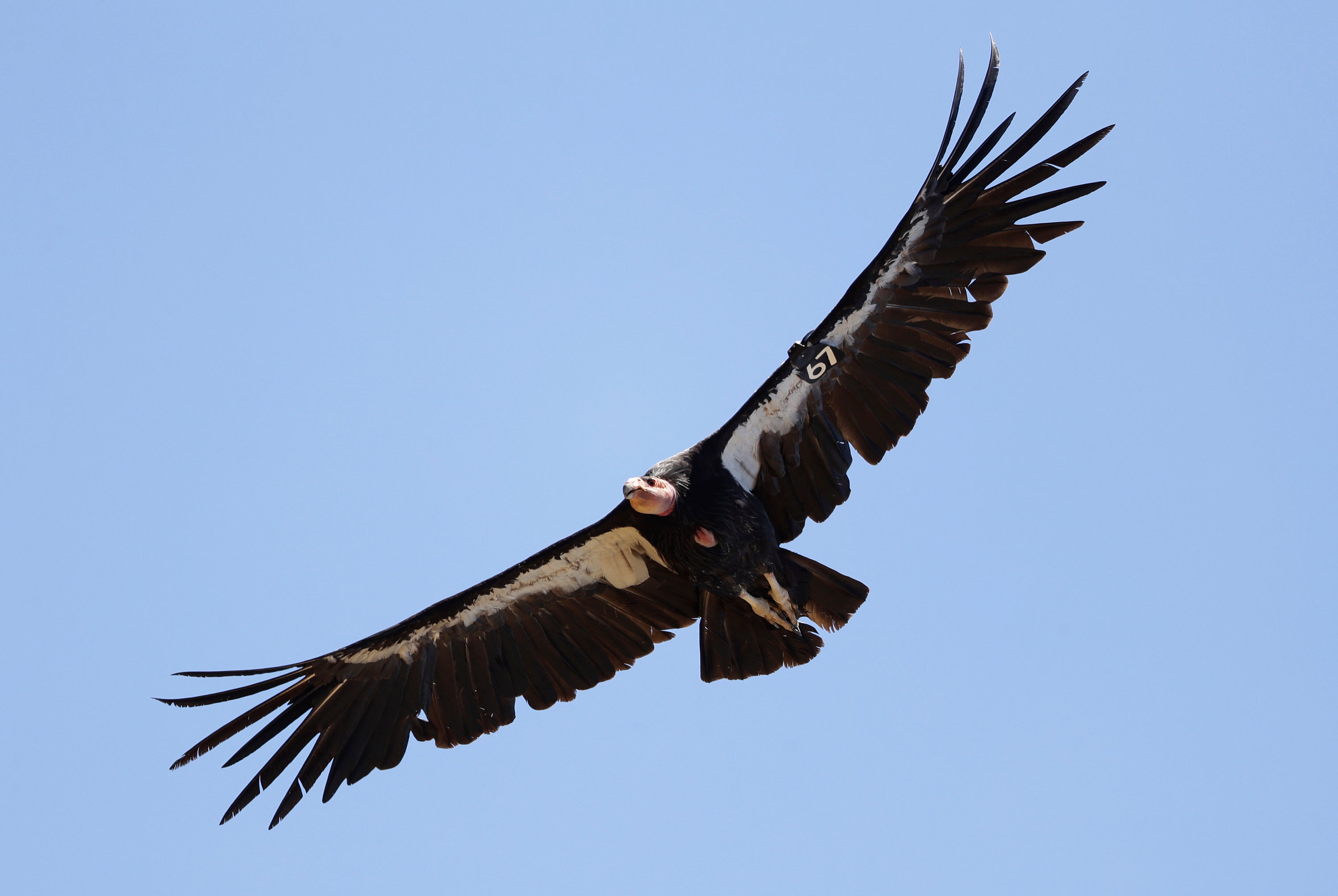Avian flu kills 3 California condors in northern Arizona
Three California condors have died from avian flu in northern Arizona and authorities are trying to determine what killed five others in the flock

Your support helps us to tell the story
From reproductive rights to climate change to Big Tech, The Independent is on the ground when the story is developing. Whether it's investigating the financials of Elon Musk's pro-Trump PAC or producing our latest documentary, 'The A Word', which shines a light on the American women fighting for reproductive rights, we know how important it is to parse out the facts from the messaging.
At such a critical moment in US history, we need reporters on the ground. Your donation allows us to keep sending journalists to speak to both sides of the story.
The Independent is trusted by Americans across the entire political spectrum. And unlike many other quality news outlets, we choose not to lock Americans out of our reporting and analysis with paywalls. We believe quality journalism should be available to everyone, paid for by those who can afford it.
Your support makes all the difference.Three California condors have died from avian flu in northern Arizona and authorities are trying to determine what killed five others in the flock, the National Park Service announced Friday.
A sick female condor suspected of having lead poisoning was found dead on March 20 and testing showed it had Highly Pathogenic Avian Influenza (HPAI), the park service said.
Two other birds later found dead also tested positive, while test results aren't yet completed for five others, the park service said.
The birds are part of a population that moves throughout northern Arizona and southern Utah, including Grand Canyon National Park, the park service said.
The Peregrine Fund, which manages the Arizona-Utah flock, also captured five other birds that seemed ill and sent them to a wildlife rescue in Phoenix. One bird died and the other four have been quarantined, officials said.
Exposure to the virus is expected to rise during the condors' northward spring migration.
HPAI hasn't been detected in other populations in California or Mexico's Baja California, according to the park service.
Avian flu occurs mainly in birds including domestic chickens, but it has been found in other animals, wild and domestic, in all U.S. states except Hawaii.
Humans are considered to be at low risk from HPAI, although there have been reported infections.
The California condor is one of the world's largest birds with a wingspan of up to 10 feet (3 meters). The birds once patrolled the sky from Mexico to British Columbia. Condors can live for 60 years and fly vast distances, which is why their range can extend into several states.
The population plummeted to the brink of extinction in the 1970s because of hunting, habitat destruction and lead poisoning from animals eating shot with lead bullets.
In the 1980s, wildlife officials captured the last remaining 22 condors and took them to the San Diego and Los Angeles zoos to be protected and bred in captivity. The birds were then released into sanctuaries and national parks where they can be monitored.
The birds have been protected as an endangered species by federal law since 1967 and by California state law since 1971.
California condors have been making a comeback in the wild and now occupy parts of California’s Central Coast, Arizona, Utah and Baja California, Mexico. The total wild population now numbers more than 300 birds.
Subscribe to Independent Premium to bookmark this article
Want to bookmark your favourite articles and stories to read or reference later? Start your Independent Premium subscription today.